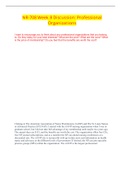Summary
Summary Theme one complete Economics B Notes from A* student
- Institution
- PEARSON (PEARSON)
These are complete Economics B Theme One notes everything on the Economics B checklist (2015) is answered with valuable information and knowledge. This will save your lots of time and you will be able to go ahead in class and will allow you to have all the learn everything you need to know before d...
[Show more]




